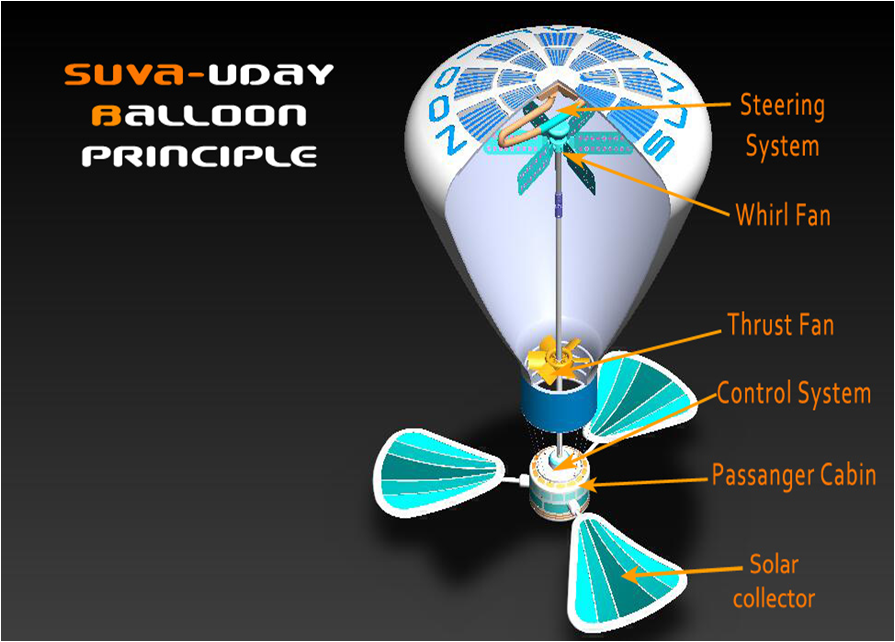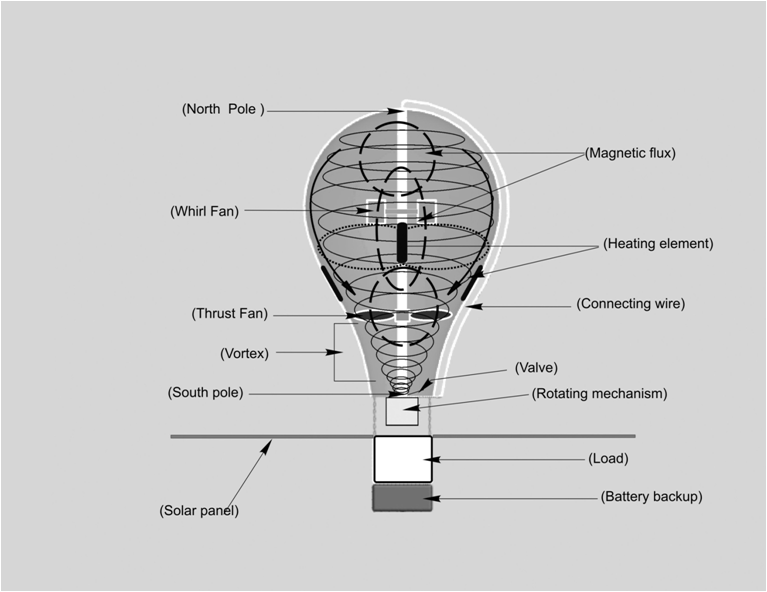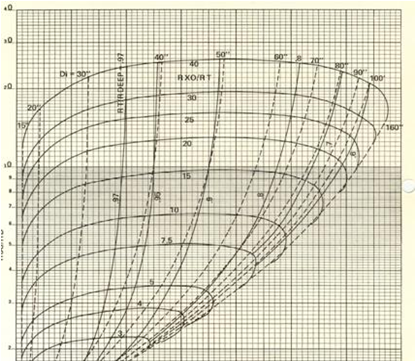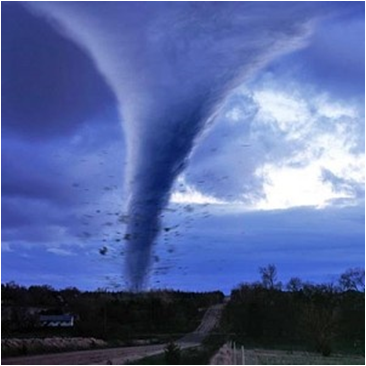SUVA – UDAY Balloon
Abstract
SUVA – UDAY Balloon works on the principle of vortex, rotational static magnetic and heating flux. The vortex forms the centrifugal force which makes the vortex funnel particles with upper buoyancy force. The static magnetic field and heating zones forms the loop inside and makes vortex steady with internal energy. The dynamic pressure difference makes the density of inner area of balloon lighter. The density difference outside and inside the balloon and vortex upper buoyancy force makes the balloon to rise.
Introduction
Initially the North and south pole is connected with static magnetic pole. The pole has partition of heating zones. The rotating magnetic flux makes the air polarized. The heat waves from heat zones make the air hotter. The vortex forms due to whirl fan makes the air rotate with high centrifugal force. This forms the upper buoyancy force of air particle at vortex funnel. Balloon crunches more at bottom side due to this vortex. Thus downward air pressure from outside is higher than upward air pressure on balloon. All three phenomenon of making air polarized, making air hotter, making vortex inside balloon and making downward pressure more makes balloon to rise up. So even less hotter balloon can also rise up.
- Speed of rotational Magnetic flux around 40000 rpm.
- Speed of rotational heating zones around 40000 rpm.
- Angular movement of air makes upward buoyancy force due to whirl and thrust fan.
- Convergent shape of balloon accelerates the upward thrust.
- The upward buoyancy force of vortex (tornado).
 |
 |
Results and Discussion
The polarized air molecules attract each other across the diameter of the rotational motion of the vortex. As the air molecules pull together, the diameter of rotation decreases which causes the system angular momentum to increase.
The vortex increases the internal energy (temperature) due to high centrifugal force. This makes the air particles to move up.
The heating zones needs to develop at inside of vertex and outer peripheral of vortex. The rear flanked downward motions of air makes balloon to have air from itself. Even if the heating zone fails, it never affects drastically on balloon flight.
The balloon can be used for fast moving travelling around 100miles/hr. The pressure difference inside and outside of balloon is maintained by air intake valves. The pressure difference in vortex can be achieved by heating element and through higher centrifugal force at top of the vertex.
The more upward buoyancy force can be directed by steering mechanism inside the balloon as shown in above figure. Direction of balloon changes with respect to change in direction of vortex inside the balloon.
- The upstream of wind is generated due to lower high density molecules and centrifugal force at top.
- The pressure difference forms in upward and downward region of vortex.
- The pressure difference forms in inside and outside region of vortex.
- The maximum efficient flux covers the area.
- The upper cover of boom should be strong.
 |
 |
Existing Methodology
- Heating source requires
- Electric drill.
- Helium or other gases balloon.
- Combined principle.
Conclusion
All seven phenomenon of making air polarized, making air hotter (only to accelerate system), making vortex inside balloon with high centrifugal force, making pressure plus density difference inside the balloon (at upward and downward of vortex + at inside and outside of vortex), making pressure difference inside and outside the balloon, making vortex particles at its funnel moving up for generating upper buoyancy force and making downward pressure more than upward pressure along the body of balloon, makes balloon to rise up. The load and velocity of SUVA balloon is much more higher than existing vehicles and can be stabilized at colder regions.